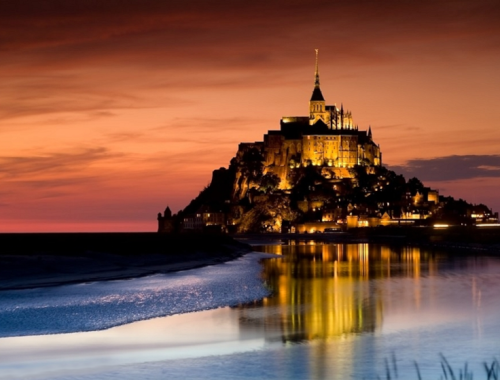Beauty in exile
You just have to take a walk in the city – or even worse: drive into the city via various access roads to experience a pronounced lack of beauty. One has to close one’s eyes to all esthetics and move on to functional registration of traffic signals, road signs, lanes and busy road users. This applies to almost all major cities in the world. Nowhere does the landscape appear to be organically woven together with the city.

If we want to see that kind of thing, we have to seek it out on a holiday in eg. Italy, where we pay tourist money to experience a famous historic city that organically merges with a mountainside and houses built staggered along the curved sides. Perhaps the Danish landscape has been too soft and resilient, so it can be leveled and laid in pipes.

If you live in a city with houses maybe dating back to the late Middle Ages, significant building complexes from the Renaissance, even more from the 18th century and most of the inner city center and half of the bridge quarters from the 19th century, then there is beauty. Still. Even here, the ugliness of modernism eats itself in where it can get away with it. A money-rich consortium, a hedge fund, a conspiracy of power interests have captivated the town planners and hired an architect to give their power perfection an appropriate expression on a centrally located building plot.
And what expression do the builders think is appropriate? Repulsive, impressive, often sky scraping brutality. Materials that signal: this has been f…… expensive. Ice cold materials, steel, glass, aluminum, concrete. Prestige, potency, power. They are especially happy with glass, because it pretends to simulate transparency – knowing that everything that goes on behind the facades is totally opaque. We see the reflections in the glass and the hint of the shadows inside.

But just outside the city center, one is again struck by ugliness and architectural brutality and cynicism for miles, undisturbed by beauty. They call it functionalism. It had to work in a grand scale machinery, where people were put into the cracks, into the holes in the functional. Before functionalism, humans created spaces around themselves and adapted the surroundings to their humanity. Functionalism is a story of the neglect of man in favor of another purpose.
One can still do as I have chosen: to step away from the city’s overdose of modernity and settle down in a village where the houses are from the 17-1800s (my own is as modern as 1937) and where the main street follows a winding old road for pedestrians and horse-drawn vehicles along a wooden belt at a coastline. Here one can for a while escape the ugliness and rest in natural beauty and the living relics of times when one inhabited and caressed this beauty.

than any access road to any big city.
Man is a natural being, not an art product or a machine part. In nature, there are no straight lines. We are not claiming here that a house far back in time did not have a rectangular floor plan and that the walls did not for vertical reasons stand vertically out of respect for physical laws. We are talking about the fact that the ancients knew the natural, organic limits of the line-drawing, and that when the lines were drawn they deviated even more from the straightforwardness. When they could get away with it, they scooped out organic tissue. Modernism despised the organic and saw it as pasted, superfluous decoration. Premodernists – if we are to name them in hindsight – saw it as a necessity of life. Didn’t modernism actually see LIFE as a necessity?
Extent of ugliness
Where to even begin? We have arrived in the city, we have started with architecture as it is the first thing that meets us. The kilometer-long inconsolable baraks intended for stowage of working animals. The inhospitable factory quarters with giant boxes surrounded by wire fences. Sterile and soulless. Even the extensive middle-class type neighborhoods have a particularly sleepy monotony soaked only by walls of shrubbery. But the topic is far bigger.
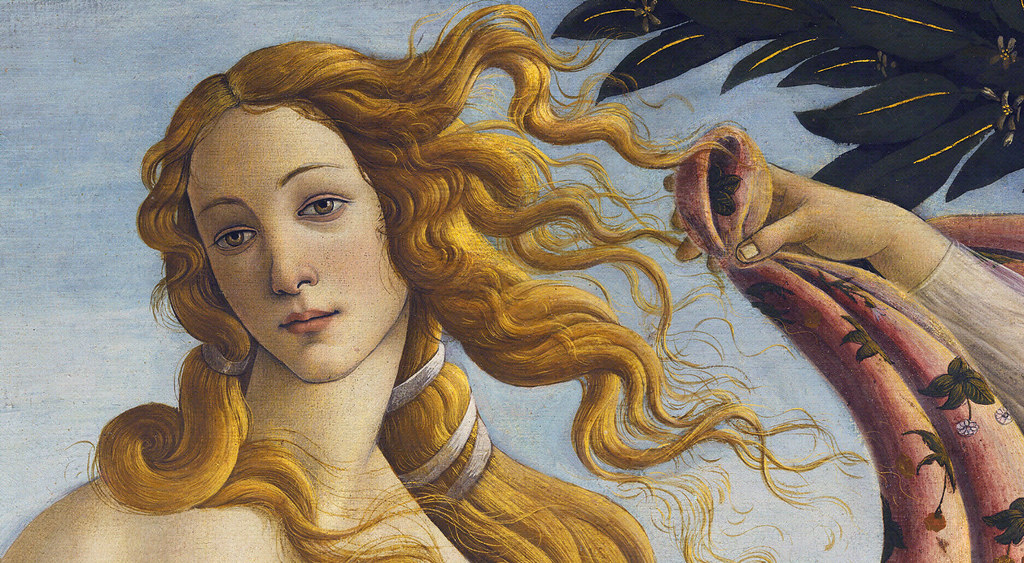
Beauty was essential for the people of the past, a time, a mindset, a human view before modernism / functionalism. They were willing to go to great lengths for the sake of beauty, they never saw it as something that could be dispensed with, skipped or abolished. The opportunity had not been invented yet, and why should they too?

Modernism is not capable of nostalgia, it is not capable of longing, for the past has been abolished, killed and ironed-out / ridiculed, after which there is nothing to long for. The recent past has now become shit-ugly, and who longs for ugliness?
Modernism is unable to express anything that is of another world, because there is only the material world, this world created for us by nihilists.
When God died, the ugliness arrived.
Is it a coincidence, or is there a connection?
We need to find out.
One thing is the ugliness itselv, and the ugliness is undeniable. In the last century, ugliness was deliberately enhanced. It became penetrating and traumatic, for it was the face of evil. The man of the century was traumatized by evil and smeared with ugliness. The role of art was to make sure that even those who had not experienced the horrors of the trenches at the Maginot Line in World War I, the massacre in Armenia, the famine in Iran, the slaughterhouses in Ukraine, the frozen death of the slaves in the Gulag, the slaughterhouse in Leningrad, blast furnaces with molten human fat in Dresden, the mushroom cloud in Hiroshima, bombed-out cities in Korea, the jungle death at Mai Lai – that they too took part in the horrors?

Was art intended and assigned a role at all? That’s what we are about to find out.
Artists say that art must reflect reality. So that’s why we must understand that they do as they do. They legitimize themselves with the fact that reality is ugly, so therefore they paint and sculpt ugly. Maybe a painting is too neat at all, so they choose to install a toilet container like Marcel Duchamp or a disgusting unmade bed like Tracey Emin. Rotten carcasses of pigs in a display case are an expression of a rotting reality. Reality is distorted, therefore the dance must be distorted like a death cramp. The world is full of disharmony, therefore the art music must be serial and atonally indigestible, and the entertainment art of the people must be banal, repetitive and childish. Or compressed noise, because art must reflect heavy traffic or factory halls. Or is it perhaps the accumulated aggression against the noise and ugliness we pour into our ears when we muffle noise with noise? Reality is monotonous, so pop artists sing monotonously through a autotuner-filter from a digital machine. Reality is made up of people who treat each other bluntly, which is why we have to read books about bluntness and mutilation and crack prose, where the language is blown to pieces with a hand grenade. The art for the reader is then to find head and tail.

We will see movies from war zones, brutal ghettos, car chases and shoot-downs in parking garages, superheroes smashing each other in computer-generated futurist scenes. Here it gets weird, because in the middle of all the cinematic aesthetic aesthetic, perfect, photo model-like types run around with slick hairstyles and gym-trained buttocks of steel. Even when they bleed or get mud on their face, they are designer beautiful and immaculate. Ugly and glamor have an erotic relationship with each other. The target group is catered for and the art product must be sold. Whether it is glamor that is the lubricant for ugliness or vice versa can be discussed.

Hold on before I shred you – I have to put on make-up.
Many people cannot cope with all the ugliness they are inflicted on. Perhaps they live in an ugly environment in the concrete landscapes in the suburbs. The road to and from work is ugly – if they otherwise have a job, because then they have to settle for the ugliness to and from the social center. They rush after their obligatory working day inside their cubicle on the fourth floor to the right. The art snobbery of the bourgeoisie twists off their interiors and mocks it as bad taste, kitch and inferior mass culture. But for them, it’s just the sanctuary where they can finally escape the compulsion of ugliness and look at something that they themselves think is beautiful. Perhaps the interior contains elements of nostalgia, longing for something that no longer exists. Maybe it’s the cheap version of something that stems from a place and a culture that they sold out for life in the suburbs’ slumber in a country and a culture they do not quite understand. The snob’s opinion of what is worthwhile, they have no idea, and if they had, they could care less.

What went wrong?
If one had asked an educated man at any time between 1750 and 1930 what the purpose of poetry, art or music was, the answer would have been: beauty. Here, too, one would have understood that beauty was a concept of value on a par with truth and goodness. But in the 20th century, it stopped.
The French avant-gardist, Marcel Duchamp, was one of the first to kill the beauty. Art was then to disturb, shock, break moral taboos, revolutionize, infuriate. It is interesting that there was now talk of avant-garde in art, as it was a Bolshevik / Marxist expression of the revolutionary vanguard that was to smash the existing. To pave the way for …? They never talked about that, they just paved.

Is there a connection between political and artistic avant-garde?
We must also find out. We have to find out a whole lot.
Duchamp just exhibited a urinal, on which he wrote R. Mutt 1917 (R. Mutt – Armut (German) – Poverty). The aim was to infuriate the bourgeoisie. He laid the foundation for a new art attitude, which could be called pubertal indignation art. Like the lad who went after the adults’ reaction by saying fart and poop and throwing away food, the artist now went after the reaction from the establishment by placing the ugliest that could be found or invented in the middle of the sacred halls of art. Like a four year old child testing borders, it happened with the greatest possible noise around the incident: See mummy, see mummy, seee what I do, seeee me NOW !!

Nogle kaldte sig for situationister. Det var situationskunst beregnet på den øjeblikkelige virkning. Her bliver det underligt igen, for kunstnerne gjorde efterfølgende krav på at blive foreviget i kunstens hellige haller og gjort til museumsrelikvier. Duchams pissekumme findes og kan i dag beglos – men ikke bepisses! – på et fint museum.
It could be interesting if a neo-activist-situationist group arrived at the museum and lined up and actually pissed on the sink. What would Duchamp have said to that? He’s long dead, so we can not know, but let’s at least guess that the custodians on behalf of the art parnassus would come running wearing uniform arresting the presumptuous. What would have happened if someone had brought a can of lager manure and poured it over Kristian Lemmertz’s dead pigs in display cases at the Esbjerg Art Museum in the early 1990s? Or literally pooped on Piero Manzoni’s yellow cans with their own poop wearing the title ‘Artists Shit’? Or what if a naughty dog lifted the legs of Michael Brammer’s killed and stuffed puppies? Or emptied a bottle of Chinese fish sauce on Marco Evaristti’s goldfish in a blender? The distance that elevated decay to great art would be broken and the stench of reality would break through. The art postulate would collapse in its own ugliness, while the well-dressed, gourmet art audience would take flight from the stench. Should anyone get the idea, it is completely free 😉

Something like that actually happened in 2014, when the artist – for that he calls himself – Paul McCarthy was allowed to exhibit a work of art – for that he called it – on Place Vendôme in Paris, one of the old squares with fine old decorative mansion buildings. The work was a giant inflatable butt plug, art in the category that the cultural Marxist and Frankfurt scholar Herbert Marcuse would have called subversive perversion. Passers-by were forcibly admitted to pass the huge fuck finger toFrench culture and tradition, for the only thing in the blunt message was UP IN THE ASS! The lifespan of the work was not long, for on an early foggy morning the sacred work of art was subjected to an assault, an insidious attack by an activist group who, wearing caps, jumped out of the side streets, after which they stabbed and perforated the artwork Pfffffffft – from butt plug to bottom scraper! The thing did not arise since, because they could not afford so many bicycle patches. Personally, I must confess that I laughed … pardon my French – my ass into pieces 🙂

Deconstructivfism applied on deconstructivistic art
They called it concept art. They also called it installation art or maybe a happening. At the beginning of the century they went as Dadaists, in Denmark they were called Art Group Fluxus. They called their masterpieces ready-mades. Certain ‘art ignorant’ did not pay due respect and called it the Emperor’s New Clothes, after which it was immediately criticized by contemporary art critics for criticizing art. Perhaps situationism should be renamed illusionism. It was simply a fart in a lantern that lit up when there was fart-and-poop gas in the lantern … and after that there was no more. The situationists subsequently went into contradictory self-containment when they retrospectively claimed the happening effect in the situation, AND at the same time demanded to be immortalized in art history and in the very fine museums that they had despised and wanted to level the ground. When it came down to it, they were even the biggest snobs.

Art suddenly had to be shocking to be allowed to call itself art. The new art had a new taste police. Should anyone question the shocking art, they were given a predicate. The problem with the shocking art was that it burned all the gunpowder off by being shocking. After that, it became trivial and boring. The artists were so preoccupied with being innovative and different and outrageous that their works became extremely short-lived. They certainly believed that the unique moment when their primary audience was shocked or outraged would last forever. They forgot that the long-lasting quality is something that belongs to the timelessness of art. They wanted to eat the cake and have it.
It was suddenly enough to have a brilliant and original idea in the artists own opinion. The idea in its raw sketch form was sufficient as a work of art. The artist no longer needed to possess the craftsmanship and refined skills of the past, for the installation of the idea sketch was enough. Installer – you just need to power up the shit. It does not require artistic skills and craftsmanship to install a urinal in a glass display case. It requires you to hire a plumber.
In ancient times, beauty was a way of seeing oneself and getting to know the world. They saw it not as something subjective but as something universal, something that could not be ignored. Beauty brought man back to his own home. The ugliness of our day has made us homeless and has banished us to a non-spiritual desert. The people of antiquity were by no means unaware that the world was full of chaos and suffering, but beauty was their counter-dose. Today we have no counter-dose, only amplification and underlining of chaos and suffering. We have no relief and reconciliation through confirmation of joy, we just smear another layer of pain on top of pain. A psychologist of psychiatrist would call re-traumatization.

Our time is a time of nihilism. Everything is random and meaningless, they say, and modern art has therefore given up on reconciliation. The followers of the ugliness have given up the yeast. Marcel Duchamp’s piss sink was in his time a satire on the snobbery in art, if one is to give it the doubts of justice. In retrospect, it over-interpreted that EVERYTHING can be great art after this. Was that Duchamp’s errand at all?
The solemnity is pronounced. When reading the art notes for Damien Hirst’s A Thousand Years, it says:
A Thousand Years
1990
2075 x 4000 x 2150 mm | 81.7 x 157.5 x 84.7 in
Glass, steel, silicone rubber, painted MDF, Insect-O-Cutor, cow’s head, blood, flies, maggots, metal dishes, cotton wool, sugar and water
Vitrines
Image: Photographed by Roger Wooldridge © Damien Hirst and Science Ltd. All rights reserved, DACS 2012
You see the curator or critic in black – it was hipstER in the early 90’s – standing there sucking on his spectacle lenses and tasting the sight of Hirst’s rotting cows skull sprinkled with blood and crawling with flies and maggots in glass cases: How interesting, how deep, HOW UTTERLY … COURAGEOUS!

But this is no longer art, it is something else. It is a bizarre ritual performed by a member of a nihilistic cult of death, a tribute to death and decay, a masochistic devotion to denial of life. With that expression, the artist can no longer call it a Memento Mori – remember that we are mortal people with the life-promoting purpose that we should value life. This piece of death pornography is a satanic celebration of death and decay – You are fucking dead, man! Eat death and let it eat you!
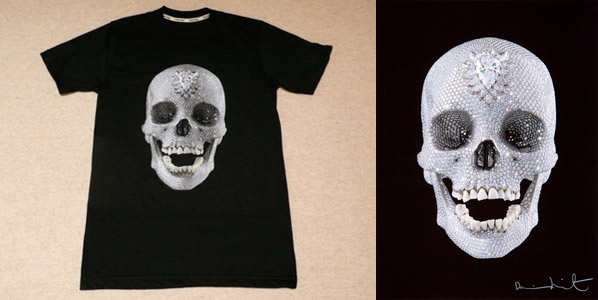
When you are an artist, you avoid a clinical diagnosis.
It gets worse, because the nihilistic ritualists have dug deep into the art industry and use it as a launching pad for their shit. The note apparatus includes Marina Abramovitch, black magic, spirit cooking, art Satanism, adrenachrome, human sacrifice, pedophilia, necrophilia and cannibalism. Yes, you are reading that right. The art world’s exhibition space is today used as projection screens for something extremely dark, which today’s people no longer have any feeling or judgment over, because through the total denial of religion and everything intangible we have lost attention to the possibility of intangible manipulation, which is the strongest field of manipulation ever. In addition, the artistic expression – as they call it – has become a cover-up for a public exhibition space with the artist’s – as she calls herself – personal perversities. I masturbate for open screen, but it’s perfectly appropriate, because it’s art!

You can then choose to call it art.
Abramovitch’s art is as close to snuff as can be imagined. It IS snuff, but because the lady has covered it under the art concept, it is surrounded by a comfortable shield of plausible denial = you can not say that because … she figures in the hipster New Yorker art avant-garde, who has every conceivable close connection to the NXVIM cult, the Epstein blackmail network, The Clinton Foundation (there is a snuff video with Hillary on DarkNet – something about killing children), the pedo networks with Weinstein, Podesta, Oliphantes, Pizzagate and Hollywood elite consumption of adrenachrome. Abramovitch’s works of art are cross-border bizarre in a satanic way. The lady is almost 70 years old and looks like one at 35. Is it: Ah, she’s probably doing well, or is something else going on?

and cock and tits and hornyness.
This kind of art is a shell hideout for exhibitionism of perversities intended to contaminate our consciousness with black matter. It’s a piece of black magic in practice. In this way, we gradually get used to the reality that they – whoever they are – want for us. We are experimental animals for the possibilities of border crossing. Everything must be acceptable, all ethics must be able to be relativized and turned upside down, and you ain’t seen nothing yet! The boundaries between art and manipulated reality disappear. Today, the media can call themselves an art project, because they exhibit an artificially created reality. It should be called lost / fake, but they call it edited, angled or narrative. Should we also use the term fake-art? abbreviated to F.ART.

The human and child sacrifice rituals of antiquity had to do with life extension for the ruling class, and the inner circle of today’s ruling class is certainly not ignorant of that stuff. Adrenachrome is a substance extracted from the blood of children who perish in a state of extreme horror. The adrenaline pumps out into their blood and this blood is harvested followed by the child’s killing = they fucking are harvested alive! According to the consumers of this bizarre product, adrenachrome, it is rejuvenating and life-prolonging like a vital blood transfusion.
The substance is best injected through the folds under the eyes, note photos of a strip of elitist people with a blood draw just below the eye. Note for information: In the United States alone, 800,000 children disappear every year! While we are at work, the baby’s organs are harvested on the same occasion. The organ industry has now overtaken the drug industry in profitability. While we’re up and running again, the meat industry is growing rapidly: aborted fetuses up to 9 months and now abortion-surviving children can with the blue stamp of ‘progressive’ politicians (New York Mayor Bill de Blasio, Democratic presidential candidate Pete Buttigieg and the entire left in the Democratic Party) are harvested for their tissues in the stem cell-meat industry. The Obama-era government-boosted organization Planned Parenthood, that lead massive propaganda for the killing of fetuses and the US Child Protective Services (CPS), which removes 10,000s of children from their parents – all are the industry’s tools.

Question: Has the hipster-avant-garde art world become a platform for the re-introduction of a black archaic ritual of human sacrifice and bloodshed? Reason and normality say: No Way! Evidence and observance say: All The Way! All normal people immediately fall into a state of cognitive dissonance and denial, while thinking and conscientious people have to ask themselves whether 20th century art, nihilistic modernism, the subversive devotion to perversion and dismantling of ALL BEAUTY have been a platform for an inhuman and satanic project with archaic roots?

Did art in the 20th century become hi-jacket to perform something that should be foreign to art and that artists by virtue of their self-preoccupation did not discover?
Marcel Duchamp was quite explicit about the agenda behind his ‘art’. He wanted to abolish the concept of art in the same way that others had wanted to abolish religion. When you watch filmed interviews with the man, you experience an ice-cold, unpassionate, cynical-calculating and pure intellectual. There is no warm human heart beating here. The assassination of the art that carried with it millennia of passion for beauty and grandeur was basically an inhuman project, and Duchamp became its prophet. Voluntary or involuntary.
Did Duchamp abolish art? Maybe he just got rid of the creativity. Art became postulates in the style of: Because I SAY this is art, then it IS art.
When Jeff Koons exhibits inflatable balloon animals and plastic flowers, and stages / exhibits his private life as a lost relationship with an Italian porn model, he exalts via art a postulate kitch. The spurious and unauthentic are hailed via a sleek stoneface attitude as a revelation of neo-authenticity.

Koons gets away with filth by calling it art.
We see that the child possesses this playful creative ability from the beginning. We can not give it to the child, because it is inherent in the child. We can only prevent it or love it. By loving it, the child develops towards being an artist. We are not necessarily talking about a person who, as an adult, chooses art as his profession, but a person with an intact curious and playful potential, that should be welcomed in the lives of all people.

– after which they themselves began to draw children’s drawings.

It’s a fine artist named Miro, and the picture costs 10 million schmackeronies.
Oscar Wilde said: All art is totally useless. It should come as no surprise if there was some confused modernist who, in a trance of modernist fundamentalism, took it and ran with it as a poetic statement: There you go, told you so! All the while he was in full swing using art to destroy an entire culture. For Wilde, it was a tribute to art because it was useless in terms of simple survival. Which is not entirely true, for art has often been used to glorify worldly power. Something for something. The artist was given a patron so that he could realize his visions, and the prince was given a monumental tribute of his power and splendor.
Humans need the useless. What should we use love for? Or friendship, or devotion and passion? So what do we do with beauty? Contractual relationships can replace love and friendship, and coercion and regulation can replace devotion and passion. The inhuman is left. Beauty is deeply human and deeply natural. Even in a furrowed old face, great beauty can be found. Maybe there is suffering too, but it is a part of life and suffering is not the same as ugliness. Ugly is the horror that is imposed on people by people. Ugly is an assault, a crime.

There is a big problem in removing beauty in favor of calculated usability. The problem is that the uselessness lurks just around the corner. Nowhere is it as evident as in architecture. We all know these cities or areas of cities where an entire city center of old, ‘useless’ houses has been demolished and replaced by usable modernity. Station centers, shopping malls. The decay already sets in before construction is complete. After 10-20 years, it is overpainted with shit-ugly graffiti. Sure, graffiti is a form of vandalism, but the real vandals were the ones who built the usable building that now 30 years later withers because no one bothers to live or work in it – because it’s so shit-ugly!

They bombed two shit-ugly housing estates.
In a world where usability, utility has taken over, beauty is just a possible by-product, a side benefit. If we’re lucky. Beauty has become reproducible. Thoughtful, astonished devotion and contemplation are replaced by greed and horniness. I see you baby, shaking that ass, shaking that ass! Enjoying beauty has turned into gluttony and lust. The lines of the human body are reduced to porn.

They wanted the takedown of the power, they said, the artists. They said they criticized. They just did not. They mocked and took revenge. They collapsed, they sank. They had been recruited as stormtroopers in a cultural act of weaponized war, a demolition project, an uncontrolled demolition. They called it deconstruction, distortion, or disruption. They let themselves be strapped to a wagon, but they did not realize who was sitting in the wagon. Maybe they had a glimpse of it, but then it was too late, because the carriage had departed. Was the demolition actually controlled, and were the plans for the demolition on someone’s drawing board?
A basic rule takes shape: Put usability over beauty, and it will quickly end up being useless. Put beauty above usability and it will be usable forever.
Art operates on a level of timelessness. You can be in its vicinity and sense your own essence. Beauty leaves room for contemplation. Only artists of the 20th century have categorically and fanatically claimed that all art is a weapon turned against the existing. Such a twisted statement is based on lack of history, one of the hallmarks of the 20th century. The world wars were for the most part an erasure of the human history of the previous century, and the result was the loss of history of human being. Art was no longer timeless, it was time-bound, it was a prisoner of time like the people who consumed it. A work of art by one of the masters of the Renaissance was never consumed, for it still stands and still arouses the same urge for contemplation.

This is why the image is timelessly appealing.
I asked if the demolition was planned? There is a philosophy behind it. Walter Benjamin and Theodor W. Adorno, Frankfurt School, describe the romantic work of art as an aura. The Marxists wanted to puncture the aura, for it was seductive, they thought. They wanted to peel away the halo / aura of art. The Marxists paid homage to the mass-produced work of art, the poster art of propaganda. Aura and halo are religious concepts, attributes of saints. Art was attacked just like religion, and therefore the Christians were sharply persecuted in Russia and the Eastern Bloc. In China, Confucianism and Daoism were severely suppressed. Communism cracked down hard on ALL that it itself wanted to be and BECAME it: a religion. Just as atheism is an antithetical religion – not areligious as atheists themselves claim – so Marxism is a materialistic and nihilistic religion. In other words, it’s ALL the worst thing it hates about religion – it’s a projection. It was opium for the people – said the new opium dealers, back then.
The demolition of art and beauty – name a single communist work of art that is worth collecting! – happened according to a plan, a blueprint. There was a will behind it, and it was not a will rooted d in love for people. We are looking for an overall concept for this will, and it is clear that communism is not a sufficient explanation. We must search behind the designer ideologies and their social mass experiments.
I would suggest satanic nihilism.

Nihilists fear art and beauty, for man calls upon his Higher Self, formerly called the Divine. Plato stated that beauty is a sign of another and higher order. Beauty comes out of Logos. By experiencing beauty with the eye of the mind, we can – as he said in his archaic language – nurture the true virtue and become a friend of God. Say that to a nihilist today and you provoke a chicken ass mouth and a flickering gaze. As an idealist, Plato believed that we are pilgrims and passengers in this world, and that we always seek toward the beyond, the eternal, where we are united with God. One can also call it a Gnostic conception of human life. God is in a transcendent world that we can approach but that we do not know directly. Through beauty we get a glimpse, a sneak peek into the transcendent, that which transcends the boundaries of the physical world.

It is interesting that provocations of the establishment today can be done just by saying God or similar expressions: truth, honor and glory, spirit, soul, nation, love, authenticity, conscience, tradition – or beauty. They shit green pigs in assembly lines, the nihilists, if you take those words in your mouth, for they are outlawed, abolished, demonized, politically incorrect. It is so funny! It’s a bit like playing Vivaldi for the junkies in the Underground Station, so they flee in disgust over all the awful good sound and harmony. Saying God in the company of a bunch of cultural Marxists – confessing or just brain-dead of the sort – is the same as throwing a terrorist bomb. Their convulsive childishness and blasphemy will trump the higher bourgeoisie’s anno 1968 exposed to their provocations.
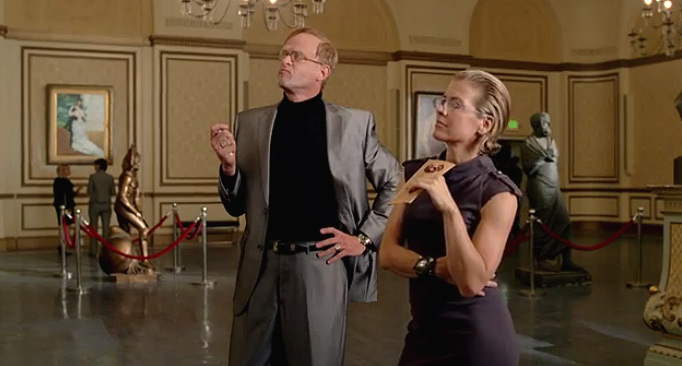
For Plato, art was an erotic field. It must be understood as he understood it in his time and culture and not as eg. Sigmund Freud. Eros was the unifying force in the Cosmos and not just the lusts of the flesh. Man was not just an operating machine. Falling in love comes closer to a definition but not quite. The Persian poet and Sufi, Rumi, is perhaps the artist who has described and sung this Eros to the fullest extend. His poetry is one long godly praise for a cosmic love, a love affair with God. One would almost think that he was drunk from morning to evening and all night, but his intoxication is not due to the consumption of wine and crazy tobacco – although we can not completely rule it out 😉 – but an ecstatic state of enlightened devotion to love .. but greatest of all is the love that Paul wrote in his letter to the Corinthians. It is the same love we find in Solomon’s Song of Songs and as reverberations in the pious marriage of pietism.
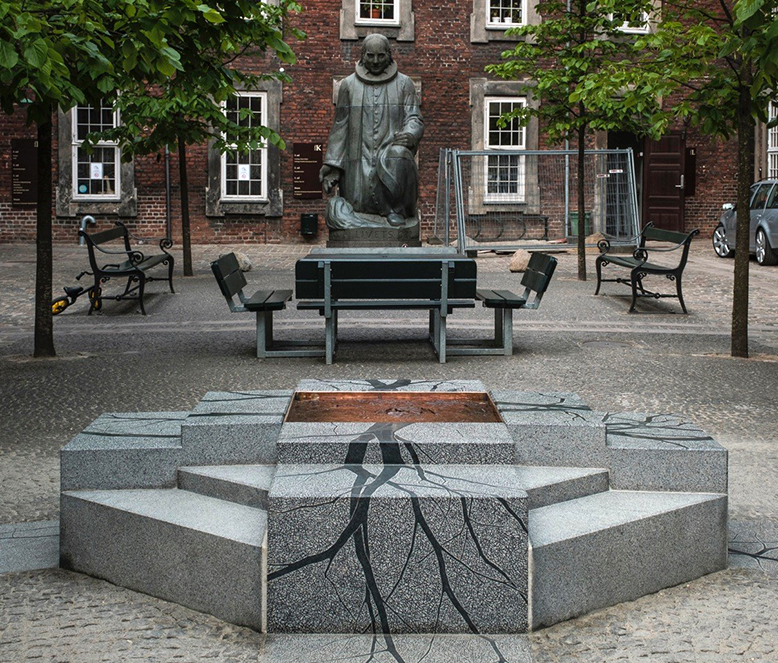
The Platonic love that is the medieval reference to Plato is a bit misunderstood. It is love, Eros, that is not reduced to lust. For Eros and infatuation, man presents a dilemma. The guarded longing can go in two directions: lust or love. One is about taking, the other is about giving. If a falling in love does not take root as love, it burns out, because EVERYTHING is taken. If the lovers fall in love, the source will renew itself for life. The burnt out desire, on the other hand, just suddenly becomes very ugly, for now the beloved is no longer beautiful but a fucking bitch and stodger who throws ugly words in the head of one.
In pop culture, there is an overload of lust. The twerked-up pop doll who could have been a beautiful woman makes an extreme effort in her expression to be shit-ugly in a seductive way. Her producer says it sells bigtime, and it does so. Not a few of these have in recent years created a fashion for making a Kali Ma with your tongue out of your mouth. A tribute to the Black Mother who demanded human sacrifices. Young girls flick around and take selfies with their tongues out of their mouths to get attention on social media. The cultural Marxists were successful with their subversive perversion from the ‘liberation’ of the 60’s to the selfie narcissism of the 10’s. Exalted beauty no longer exists in the majority of people’s daily lives, for it has been replaced by plastic glamor, X-Factor flicker, café-latte with an eternal stream of stereotypical pop music, Instagram bad tase, baby language, pants with designer holes in, purchased tattoos, o-my-gooood!, noise, indifference and apathy.
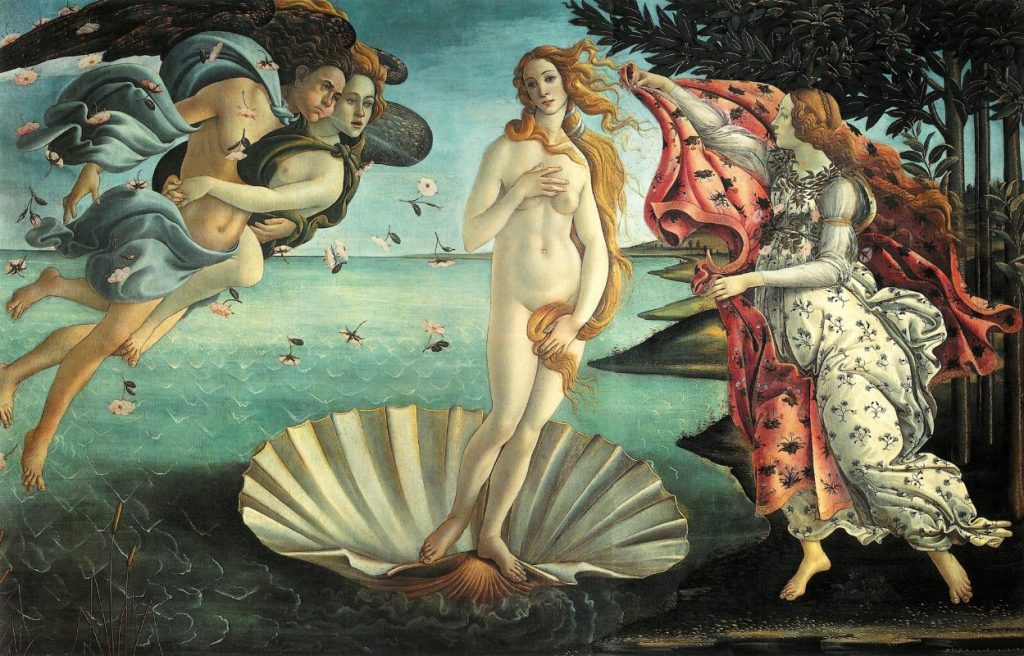
But you do not primarily think of fucking her, do you ?!
The Nihilists were afraid of art and had to destroy it because beauty is not a primarily sensual feeling, it is a religious feeling. A statement that will no doubt provoke nihilists or Newagers or those who believe that religion is the root of all evil because they have understood – and so much they have understood – that a rot has crept into the top of the Catholic Church. What they have not understood is that religiosity is an integral part of the human being and that any attempt to amputate this integral feeling has a number of fundamentally negative consequences.
Why were the nihilists afraid of the higher being of man? Here we may be approaching the core and key to understanding the misery of modernism and the 20th century. The higher self of man is not a slave. It is as free as can be imagined for man, because it is bound only by the fundamental laws of the universe and respect for all life. It is a respect in love (Eros) that always gives and never takes but in return gets everything as a gift. A completely incomprehensible paradox for nihilists and a statement that has a direct course against a provocation of those who preach that the fuckfinger of the universal laws means freedom. That is why I propose satanic nihilism as the overarching and underlying concept.
The concepts of freedom and liberation are hijacked and militantly politicized (weaponized) and hereafter mean the opposite. That is why Karl Marx wrote tribute poems to Satan. That is why extreme modernism is always pubescent and transgressive, promoting the chaotic and cultivating the animal sides of man. That’s why Marina Abramovitch soaks around cunning images from torture chambers, S / M cellars, pedo-scenarios, cannibalistic orgies and occult-satanic symbolisms – and has an audience that applauds: How interesting and progressive! That is why materialist-positivist science insists that consciousness is a waste product of chemical compounds and neurons + synapses that go bzt-bzzzt. That is why they said that religion was opium for the people, and what they had in mind was man’s contact with his higher self, which can never become a slave. That was why they wanted to destroy the family, the love, the nation, the relationships between man and woman, parents and children with feminism and LGBTQ’ism. That was why they wanted races, ethnicities, classes to hate each other.
Satan turns EVERYTHING upside down, the devil wants slaves at his feet.
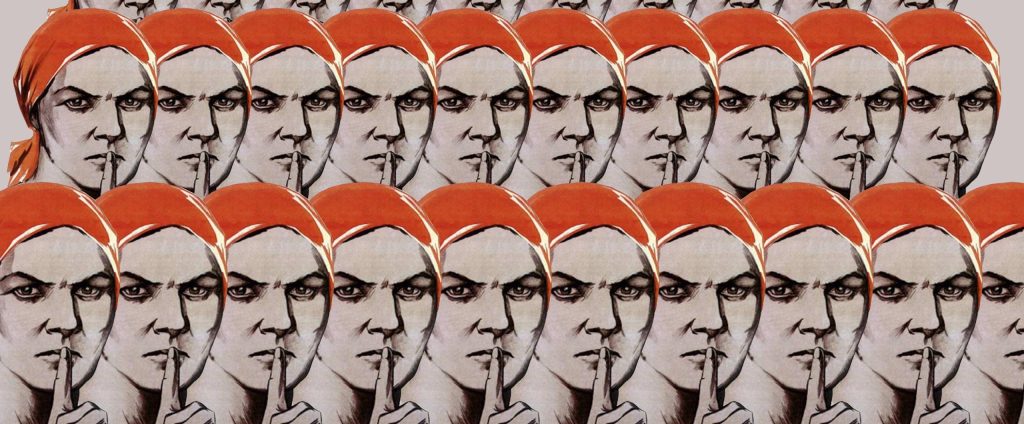
How dare you ?! Beware or you will be canceled!
- The cult of ugliness is self-hatred. People who hate themselves in their ugliness never pose a threat to their oppressors … as long as they hate themselves.
- The cult of ugliness is a PSYOP, a psychological operation performed with strategic military precision turned as a weapon against an enemy – in this case YOU! your friends, your family, your network, your clan, your nation, your race, your faith, your social segment – and the rest of humanity.
- If art is a reflection of human culture, then we live in a culture of disharmony, disproportion, incoherence and asymmetry.
Studies of the agenda of the intelligence services reveal that at some point they became very interested in the possibilities of art to exercise social control and invested large sums and energy for the purpose. Philosopher Jay Dyer has described in his second book on Esoteric Hollywood how already the CIA’s predecessor OSS identified art as a target field. They went so far as to corrupt French snobbery intellectuals to promote nihilism. He refers to Francis Stonor Saunders: The Cultural War – The CIA and the World of Arts and Letters. It turns out that a string of pioneers in various art movements were bought and paid for by the CIA: Jackson Pollock, C.D. Jackson, de Kooning, et al. via an organization called CCF – Congress for Cultural Freedom. There was that word freedom again. They always say freedom when they mean cowardice, falsehood, loss and captivity.

The painters’ painter, Rembrandt has in addition to performing beauty in a class of its own, also told us something about what beauty is. Beauty is in the middle of everyday life. Beauty is the eye that sees and the ear that hears. Beauty is a way of looking at everyday life. Such a view is admittedly very demanding not to say close to impossible in the scenery of accomplished ugliness that is the environment of many people.
How can it be? I would say that it is because this environment, this everyday environment, has been created for us, not by us. We have not created the inconsolable concrete squares of miles of box-likeness ourselves. A farmhouse 200 years ago was built by those who first inhabited it. The concrete boxhoods have leveled a landscape with soil before they were built. The farmhouse looked like a nook in the landscape, where it snuck in. The concrete block committed a piece of rape, the farmhouse instituted a symbiosis.
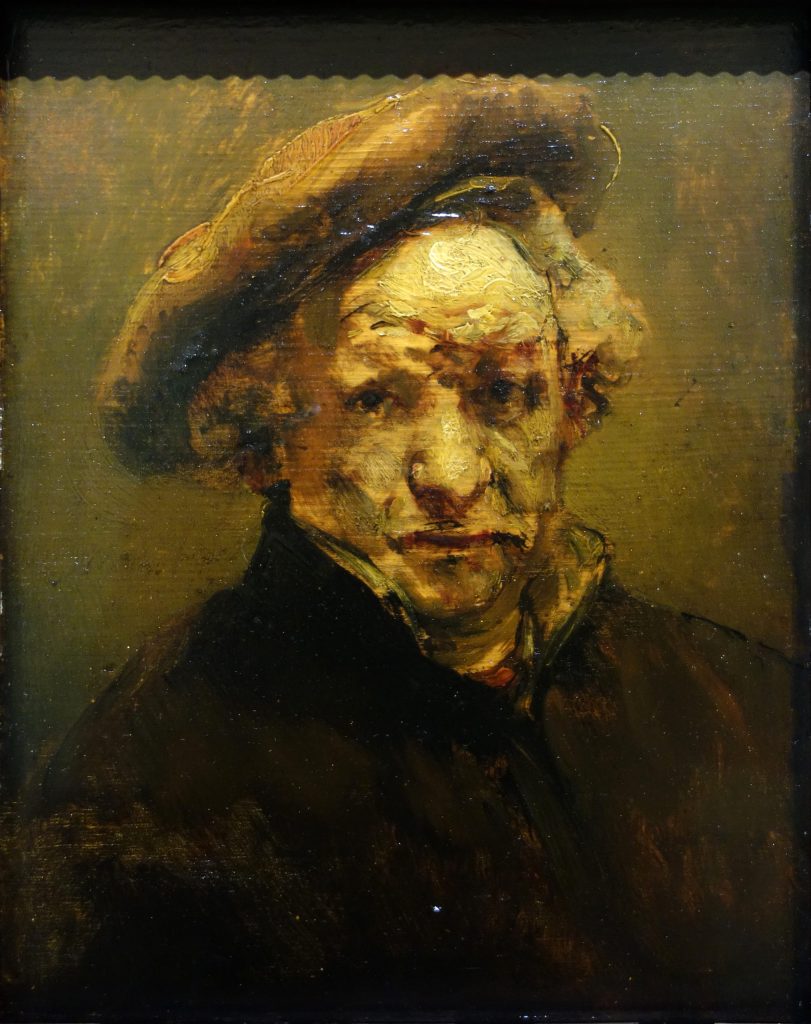
In Rembrandt’s paintings we do not see beautiful and exemplary faces. We see pictures of ordinary and everyday people whose faces have a life character. There are furrows and shadows of concern. The beauty is that despite or rather because of the furrows and wrinkles, they have a dignity and a beauty. The painter shows us that beauty lies in the point of view and the love of man. You are seen.
It can be said that Rembrandt still conveys Plato’s worldview that God exists in both the hereafter and the present. This religious understanding of beauty lasted for 2000 years – and no doubt existed thousands of years before Plato. Where did the gradual disappearance of this concept of beauty begin? It took hundreds of years to break through, but it started with Newton and the mechanical universe. Or rather: that which Newton was noted for by science and posterity. When the universe becomes a piece of mechanics, values and ideals disappear, because what are we going to use them for? The clockwork, the mechanics have no purpose, for it has no cause. Our time has perfected the idea of no purpose and no cause of pure chance on the one hand and mechanical determinism on the other.
Darwin, Marx, Freud and Einstein represent the whole field and are fixed points, headlines in the creation of the new consciousness, where man is no longer a man but a creature lost in a machine of ugliness. Darwin’s human vision is an advanced monkey fighting for its survival. Marx’s view of man is a mass phenomenon that is a slave to historical mechanisms. Freud’s human vision is an operating machine with a pedophile relationship with his parents from birth and by the way obsessed with sex. Einstein’s cosmology is a relativistic universe that encounters its own heat death through entropy. A death cult universe.

The lack of beauty is in a way an extreme form of Puritanism. Even the Puritans of the Protestant Church, who forbade pictures and decoration, never went that far. Puritans are found mostly among people living under very strict living conditions. In Denmark, we have Indre Mission, which was especially strong among hardy fishermen in West Jutland. The Swedish, Dutch and Scottish emigrants to America were deeply puritanical. But even among such strict and almost masochistic-religious groups, an ugly everyday life was unthinkable. Their houses, their interiors, their clothes were beautiful, for they were also traditionalists. As people who had to emigrate out of hardship and poverty, it was essential for them to hold on to the old, for otherwise they would have to reinvent the whole world.
The common people in the pre-industrial period and well into the period surrounded themselves with things of beauty. Things that mattered deserved beauty as an emphasis on their importance. The further we go back in time, the more meaningful people’s everyday lives were. There were rituals for everything and not just on festive occasions where much was made of the rituals and their beauty. A May party, an autumn party, a Christmas party, a wedding were explosions of simple splendor. What the local communities lacked in prosperity, they compensated for by patient diligence and ingenuity. Modernism saw tradition and ritual as expressions of something petrified. Of course, it lies a bit when we visit a museum village like Frilandsmuseet, because the houses and the interior are the best that could be achieved, but even on the small farms we find a modest beauty. There was always something extra made out of it.

At the other end of the scale we find edifices like the Gothic cathedrals, whose overwhelming beauty, especially their interior, has not been surpassed 800 years later. Which 20th century skyscraper do we think still stands in the year 2785? The interesting thing is that the structural core, the built-in but hidden functionalism, required no less engineering and knowledge of physics than a large construction company has to possess today.
A few pilot projects have shown how difficult it was then. The American magazine typhoon, William Randolph Hearst, bought a Spanish Cistercian monastery, Santa Maria de Óvila, which was separated by stone. He would have used it for one of his megalomaniacal neo-palaces, but never got that far before he died. The posterity spent several years mapping the stock of stone and rebuilding the convent in California. The construction technique had been lost for centuries, so in order to do so, they first had to make models to test the Gothic pointed arch constructions, their stress points, and their support structures. There’s a reason they look the way they do.
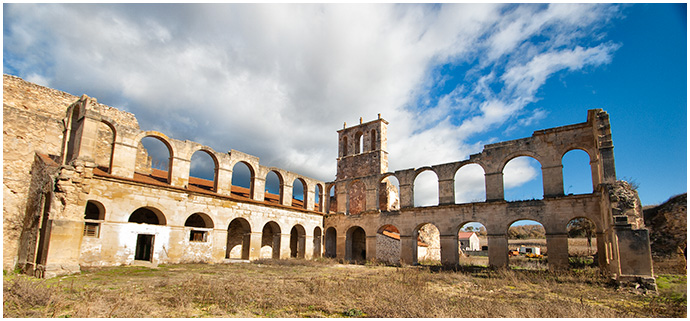
On a very large scale, the great cathedrals of France use the same technique. It can be said that behind the impressive vaults and their indescribably stained glass windows lie some very strict building construction principles, without which they would not have been possible. But it is only recently that one has become aware that it was a chapter of the Bible, more specifically the Book of Kings, that created the style starting with the basilica of Saint Denis north of Paris, from where it spread.

When one reads the description of King Solomon’s Temple also called the City of God, it says that the lower part of the temple is 30 feet high and the upper part as well. It turns out that the largest of the Gothic cathedrals has a height in its basic structure of just 30 + 30 feet. Elsewhere in the Bible it says that God told Noah to build the ark so that it was 50 feet wide (Book of Kings), which corresponds to the floor area in the middle of the cross structure of the cathedral floor plan. A third place in the Bible is the third sacred number 144. It turns out that the height from the floor to the top of the central vault is 144 feet. A French foot before the French Revolution, where the introduced meter system is 30.38 cm, which means a height of 43.7 meters. And then we do not count the towers, because it is only the inner measurements.

The cathedral builders thus tried to recreate the City of God, the Temple of Solomon. One can say that their beauty is far from the mundane and that was the intention. The light from the windows – and it was completely unheard of that in the 12th century one could create so much window area in such tall buildings – should be of another world. The cathedral was nevertheless located in the middle of the city, so it was a part of everyday life, and people came inside every week, so the other and higher world was a recurring weekly experience. Today’s people do not come daily or weekly in elevated buildings to contemplate their higher selves. They come to the temples of consumption to contemplate the acquisition of cheap shit that they desire but do not need.

Genetically modified aesthetics – form and content are similar.
Churches were the tallest buildings in any city until industrialism and modernism took over. The Eiffel Tower became one of the first symbols of the new god Mammon, and steel was his servant. The tower was to be taller than Notre Dame. In the Danish landscape, it was DLG, Dansk Agricultural Resource Company’s shit-ugly grain silos that were the highest – after the communication masts. In the big cities, it became palaces or hotels of power, where it used to be the cathedral or the town hall.
House of Industry by the town hall square was not allowed to shoot into the air, but it lies like a powerful glass and steel giant and demonstrates who rules the city and the country – and it is not the elected representatives inside the town hall across the street. The Industrial palace must not be beautiful, it must be impressive and awe-inspiring. It is – to put it bluntly – a piece of fascist architecture that must demonstrate that private enterprise has now engulfed the state and municipality. There has been a forced fusion of the private and the public, which is basically the definitions of fascism.

Mention a fascist or Nazi edifice built for the sake of beauty! This is not the experience sought in the Albert Speers Lichtdom intended for the Nuremberg mass meetings.

The giant dome Volkshalle, which was never built, was to be seven times larger than the dome in St. Peter’s Basilica. It’s crushing, overwhelming megalomanic, not beautiful. Perhaps it was in the realization that they would never be able to create beauty that the Nazis looted works of art and hid them in basements. Or was it to protect the German cultural heritage from being destroyed by the British firebombings? The British harbored a huge envy of the greatness of German culture, and their bombing of Germany is one of the greatest vandalistic acts of the century – justified by the fact that they were evil, the Nazis. Churchill, however, revealed – that kind of guy can not help it – that This is not a war against Nazi Germany. It is a war against the German people themselves! He wrote it, said it, and he meant it. He expressed the epitome of 20th century ugliness in two sentences. It was about the destruction of a culture, a civilization in the extreme consequence.

The Nazi People’s Hall (Volkshalle) was a monster project – never built.
The Russian Revolution and the entire Soviet state were one major vandalism. All the beauty of Russian culture had to be expelled. The Soviet aesthetic is even worse than the Nazi aesthetic (Albert Speer was, in fact, a great architect, like him or not). Due to the longevity of the Soviets, many of their power buildings still stand as pillars of shame over the by far largest vandalistic act of the 20th century.

The Newtonian mechanical universe left a vacuum. An English thinker by name / title the 3rd Earl of Shrewsbury set out to fill the void. Science measures, categorizes, explores, and claims to explain the world.. But its explanations are imperfect, he thought. Man sees and experiences the world in a different way than the positivist-materialist distillate. There is the insidious thing about science that it opens the doors to consumption through explanation. It arouses interest in what we can use the world for. A world that has become a thing needs no compassion, for it is not like us, and we are not like it. Nature turned into a piece of cheap dirt, as people say with cynical irony. Its only meaning is its possibility of exploitation. Isn’t it as if the world is getting very much consumed? Its places exhausted, elsewhere abused.
Shrewsbury filled the vacuum by saying that beauty was not created by God, for here he would have been a bit too late in relation to his time. The beauty was discovered by humans. In doing so, he raises admiration for nature and the world to the level that religion had previously occupied. It is the beginning of the semi-religious romantic worldview, a new form of pantheism, a resurgence of the world. The artists slipped away from being illustrators of sacred history in the service of the church. They became explorers of nature. Where previously the Holy Madonna was seen in the foreground and the landscape in the background, the landscape now became the very motif with people in the background.

Shrewsbury urges to forget about the fixation of using and exploiting. The great philosopher of the Enlightenment, Emmanuel Kant, calls it disinterest. We are not stakeholders in relation to nature, because nature IS in itself. Or stakeholders in relation to each other, because it hangs closely in the utilitarian view of life that we also see each other as usabilities. Kant says: We should not see man as a purpose for us but as a goal in itself. Like the flower – its message to us is: the flower. It is a kind of zen attitude expressed by a German idealistic philosopher. Beauty is the way to truth. Take a friend’s child up in your hands and make eye contact. Are your first thoughts: what should I use the creature for? So, should I play ball with it, perform scientific experiments with it, or eat it? No well, the child IS in that moment what it is and you completely forget yourself in the same enchanted moment.

In the admiration of beauty, we forget what else we might use it for. That’s enough in itself. Sit on a bench in a secluded space with old patinated buildings and a soothing fountain and fall into spells. You can sit there for hours for no other purpose than to sit there. Experience how all the people who pass by are temporarily affected by the atmosphere of the place. Except those who can not let go of their mobile teddy bears for just a while, but they are not present anywhere anyway. Then try to do the same in a parking lot at a mall. You get restless pretty quickly and think: Isn’t she soon done shopping so I can get away from here? Is that an unreasonable comparison? Some urban environments are almost 100% like the parking lot. The parking lot has admittedly never been the place of contemplation, the rest of the city center! So far functionality seems necessary.

The artists lost their faith and religion, of course. They lost the conviction that beauty was worthwhile. But what also seemed unnecessary was their fervent urge to mock all remaining beauty. They forgot one of the main commandments of self-respect: One can NEVER lift oneself by demeaning others. Their world became a hell where love and beauty do not exist.
The artists before modernity were neither deniers of beauty nor ugliness, but they saw their task as a project of reconciliation. Art could be full of cruelty and pain, grief and disgrace, longing and sorrow. But the purpose was NEVER what psychiatrists and psychologists today would call retraumatization, retention of trauma through repetition. The purpose was redemption. In Greek theater, both comedy and tragedy existed. They were didactic redemptive, for in the tragedy we understand that the man who pursues his desire is tragic, while a man who realizes his needs, fulfills his destiny and becomes comical – an expression we today understand as ridiculous, where antiquity understood it as a happy ending. There was no laughing at, there was smiling with and in sympathy and understanding. Does it make sense?
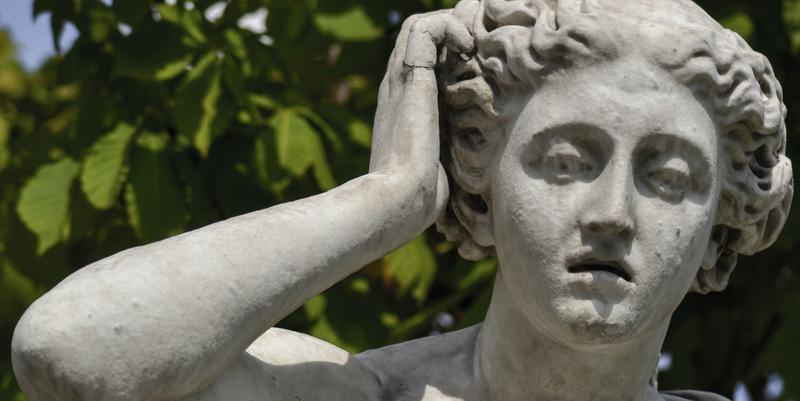
The art and the beauty never died. The modernists had hoped that their diligent work had borne the evil fruit. The beauty just went into exile. Once the smoke of modernism has settled, it will reappear.
*
Thanks to the late Roger Scruton for inspiring to these reflections, of whom some are borrowed.
If you find the philosophers documentary Why Beauty Matters somewhere on the Internet, I urge you to see it.



